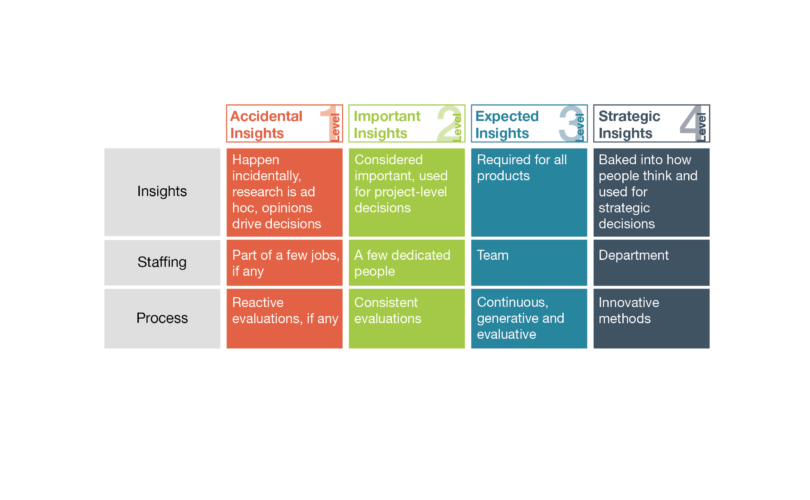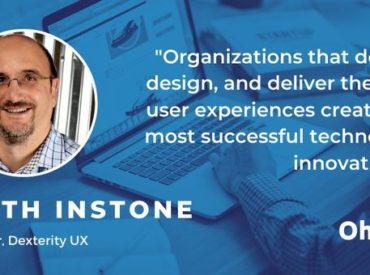As part of the Stratascale Horizon Report on User Observability, I tried to explain how user insights is an organizational capability that helps digital system engineers, designers, and management understand experiences that customers and employees are having. With shared understanding of system performance, users’ experiences, and business transactions, organizations can increase their digital agility, helping them survive in today’s “software eaten” world.
To help explain user insights as an organizational capability, I made a first pass at a “maturity model”. Four levels and 3 ways to frame each stage.
Level 1: Accidental Insights
- Insights happen incidentally, research is ad hoc, opinions drive decisions
- Staffing: Part of a few jobs, if any
- Process: Reactive evaluations, if any
Level 2: Important Insights
- Insights considered important, used for project-level decisions
- Staffing: A few dedicated people
- Process: Consistent evaluations
Level 3: Expected Insights
- Insights required for all products
- Staffing: Team
- Process: Continuous, generative and evaluative
Level 4: Strategic Insights
- Insights baked into how people think and used for strategic decisions
- Staffing: Department
- Process: Innovative methods
Why 4? I tried to do it as 3 and something was missing. Why not 5 or more? I think I captured the key stages with 4. Many other user research and user experience maturity models have more stages, which can be useful, but I was aiming for something easier to explain to IT leaders (vs. user experience colleagues).
Like any model, it is too simple and lacks all of the “it depends” that makes it immediately actionable.
What is not clear about this model? What makes this one better or worse than others? Do you find anything “insightful” (pun intended), or is this just another maturity model to ignore? Is it worth expanding upon?
Go over to LinkedIn to comment. Or Twitter.
There are a lot of UX and design maturity models out there. Below are the ones that I reviewed and borrowed from explicitly for this purpose (but I have studied so many maturity models, they start to blur together). Any others you would recommend?
I did not spot an existing model focused how an organization approaches user insights. Some represent user research while most try to address the whole range of user experience capabilities (like user interface design). That may be something that makes this one useful. Or not.
- The 6 Levels of UX Maturity, Nielsen Norman Group
- A UX Research Maturity Model, Tomer Sharon
- Applied UX Strategy, Part 1: Maturity Models, Yury Vetrov
- Moves to Modern Research: A New Maturity Model for User-Centric Organizations, dscout



